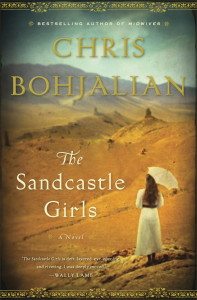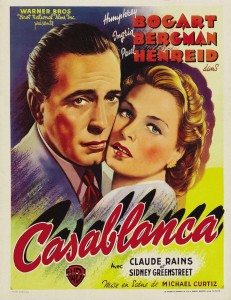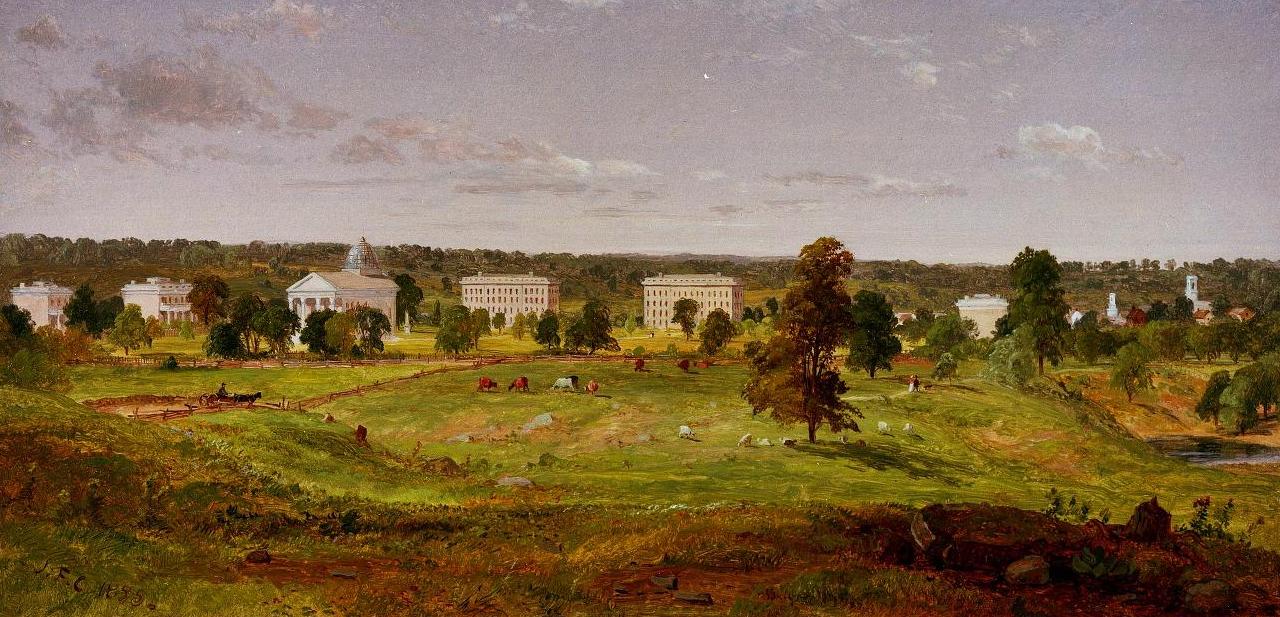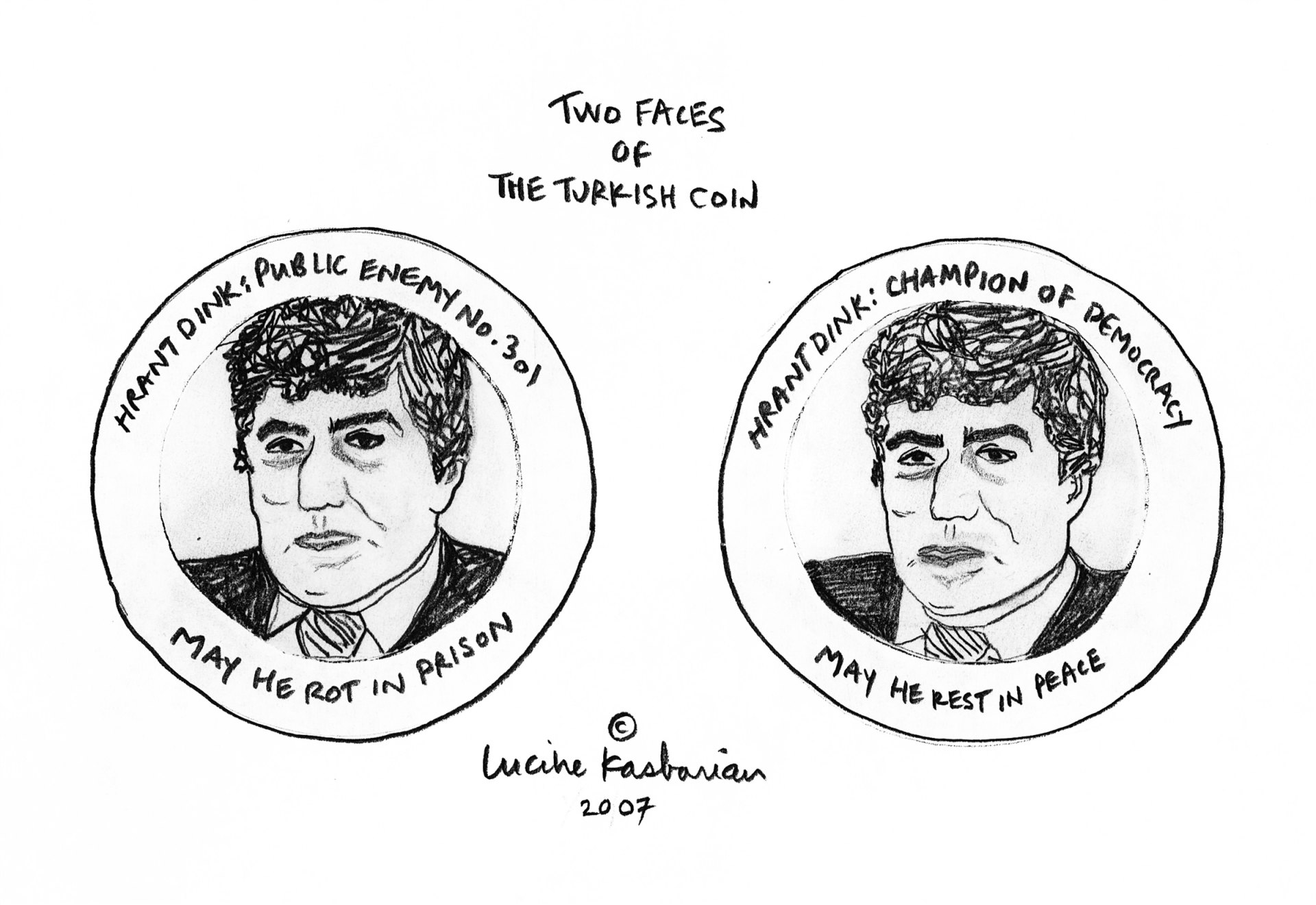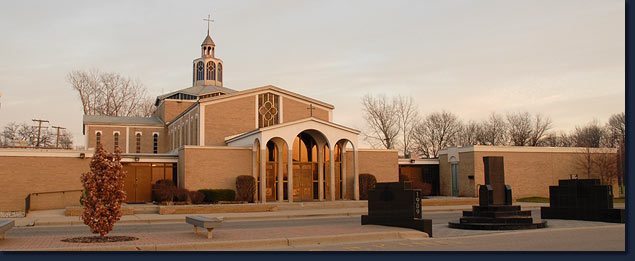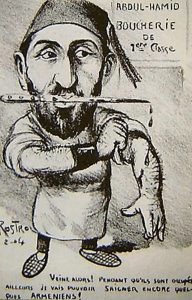In 1912, Armen Tigranian wrote the beautiful opera “Anoush,” based on Hovhannes Tumanyan’s poem of the same name, which became the most beloved opera in Armenia. “Anoush” tells the tragic love story between a peasant Armenian girl, Anoush, and her shepherd boyfriend Saro. Their love affair ends in loss and death as a result of a conflict between Anoush’s brother Mossy and Saro. “Anoush” is a testament to the passion of Armenians, and demonstrates that we are like the rest of the world in matters of the heart.
In the story, local and ethnic customs come into play when at a village wedding Mossy and Saro engage in a wrestling match, an acceptable local custom. With his macho bravado, Saro oversteps his boundaries and commits a no-no by pinning Mossy to the ground, humiliating him. Mossy vows to destroy Saro, now his enemy. He shoots Saro, leaving those of us who filled Detroit’s Music Hall on the evening of Oct. 31, 1981, shocked at the actions of our hot-blooded ancestors.
Anoush becomes insane with grief and throws herself off a cliff, ending her life.
Michigan Opera Theater Director David DeChiera produced “Anoush” for local audiences that year. DeChiera was persuaded to undertake the project by a friend, noted Detroit music lover and pianist Alice Haidostian. Many Armenians eager to showcase Tigranian’s talent made generous donations to help make the production possible.
It was a smash hit; emotionally intense. It gave local Armenians another reason to be proud of their roots, represented by the talented Tigranian.
***
[SPOILER ALERT: The Sandcastle Girls] The play’s storyline reminded me of New York Times best-selling author Chris Bohjalian’s The Sandcastle Girls, staged in the aftermath of the Armenian Genocide. In the book, Armen, the protagonist, is separated from his wife and child. Years later, he falls in love with a non-Armenian aid-worker caring for Armenian refugees. Armen’s wife resurfaces and sees Armen with his new love, and their apparent devotion to each other. In her despair, she throws herself from a bell tower.
Bohjalian agonized on how to write this sad ending; I wish it had ended differently. Of all the sorrow in this book, as an Armenian woman, I was deeply hurt by Armen’s fate—falling in love with someone else, leading his wife, who had been abused and tortured by Turks and Kurds, to end her life just before reuniting with her husband.
Happy endings: Are they made on earth or in Heaven? The good news was that “Anoush” was a big hit.
***
[SPOILER ALERT: ‘The Bridges of Madison County’] In the film “The Bridges of Madison County,” set on a farm in the 1960’s, were you not dismayed when Meryl Streep’s character, Francesca, hops into a stranger’s truck to show him the way to the Roseman Covered Bridge? The stranger, Robert Kincaid, a Life Magazine photographer, had driven down a long, dusty country road until he discovered a willing Francesca, who fortunately came to no physical harm due to her rash decision to get into the stranger’s truck. Did she expect to find love?
The stranger offers her a cigarette; she accepts; after which they go to the bridge where he shoots footage for a film. When they arrive back to her farm, she offers him iced tea, and they even dine together.
She is restless; she had expected more from her union to her husband, a farmer. She describes him as “clean,” indicating that he is a nice and uncomplicated man. Obviously, boredom has set in for Francesca, the mother of two teenage children, a boy and a girl, who had gone off to the Illinois State Fair with their father for several days.
A Life photographer, a dusty farm road, a man with an interesting life who, like Francesca, enjoys jazz— well, the steam in the kitchen was not just from boiling corn. They dance and become affectionate. He wants her to leave the farm and go away with him. She is tempted, but morality rears its head. Duty to family comes first in her mind; and when her family returns, they resume their tedious life.
It’s a rainy day. Kincaid is waiting for Francesca to join him in town. She is sitting in the family truck with her groceries. She sees him and firmly grasps the vehicle’s door handle wanting to join him. He gets out of the truck, is soaking wet, and looking at an anguished Francesca who is torn between Kincaid and her family. You sit there hoping she jumps out of the truck and runs to the photographer. She does not.
The love they have is rare and enduring. For her, it seems this is not enough. She stays with her husband in the truck, filled with remorse, as she has sacrificed her happiness.
Kincaid’s life ends, and a box is delivered to Francesca, now a widow. In it is a copy of his book dedicated to her, the one she had encouraged him to write; a religious medal that had once belonged to her; his ashes; and his I.D. bracelet. It is all too sad and romantic. They had truly loved each other.
Francesca leaves behind a diary of her affair with Kincaid, which shocks her son, while her daughter understands. The mother leaves instructions that when she dies, her ashes are to be combined with Kincaid’s and strewn from the Roseman Bridge. Her son and daughter stand on that symbolic bridge and scatter the lovers’ ashes into the wind which blows into the meadow surrounding the bridge; they are finally together. Another lamentable ending. Does Heaven await lovers?
***
[SPOILER ALERT: ‘Casablanca’] “Are you ready, Elsa?”
“Casablanca” is an all-time favorite love story for many. Humphrey Bogart plays Rick, an American cafe owner in the North African city of Casablanca, where refugees arrive with the hopes of taking the plane to Lisbon and freedom, in the face of a likely German takeover of Europe. Elsa, played by Ingrid Bergman, is Rick’s love interest; she left him stranded at the Paris train station when she discovered that her husband, a leader in the underground freedom struggle, Victor Laszlo (Paul Henreid), was alive. When Elsa walks into the cafe, Rick displays deep bitterness at her presence in his shop, but his love for her resurfaces when she explains why she abandoned him. Strains of the song “As Time Goes By” run through the film’s background. Even the hardened Rick has heard of Laszlo’s courageous leadership and admires him.
The star-crossed lovers embrace tenderly. Elsa wants two plane tickets to Lisbon for her and Rick. She still loves him, and tries to use their former love affair as the basis for obtaining papers of transfer guaranteeing air passage to Lisbon. Rick turns out to be a patriot and, though he and Elsa do briefly rekindle their romance, he devises a plot to get Laszlo and Elsa to meet at the airport instead. Rick tells her the two of them “don’t mean a hill of beans on the scheme of things” and that it will be Laszlo and Elsa boarding the plane. Rick looks in Elsa’s eyes and tells her how important she is to her husband’s work.
In the film, Elsa expresses concern for Laszlo’s safety saying, “Be careful, Victor.” Her concern is real, but what does it mean when Laszlo embraces her and his kisses land on her cheek not her lips? He is a sophisticated man, not a fool. He is aware his wife was previously in love with Rick. Laszlo looks at Elsa, while holding her arm, as they walk toward the plane. He utters lovingly, “Are you ready, Elsa?” She looks bewildered, and responds, “Yes, Victor.” Then, she looks back at a grim Rick.
The plane lifts upward in the darkness of Casablanca’s night, separating yet another pair of lovers.
***
[SPOILER ALERT: ‘Godfather’] In the “Godfather” film, Michael Corleone’s daughter Mary falls in love with her first cousin Vincent, who by design is destined to assume the aging Don’s position as godfather. Michael tells the ambitious Vincent that the price he has to pay to become Don Vincent Corleone is to give up his daughter. Vincent agrees. Mary is heartbroken. She says to him, “You are just like my father.” Oh, how it hurts to hear him say to the young Mary, “Love someone else!”
The family is exiting the Palermo Opera House when gunshots ring out. They were intended for Michael but instead Mary is mortally wounded. She calls out, “Dad!” He, in turn, holding his daughter, shouts, “Mary!” Vincent too shouts her name, “Mary!” Mary dies, deprived of her Vincent. My tears flow every time.
***
[SPOILER ALERT] I won’t even go into the ending of “The Way We Were.” Hubbell Gardner (Robert Redford) and Katie Morosky (Barbra Streisand)—once wed college sweethearts, now divorced—see each other across a busy New York City street. She runs to him smiling, and it is clear that they still have a spark for each other. She was just too intense for him. They hug; she runs her hand lovingly to smooth his blonde locks from his forehead; and they remember the love they once shared. He crosses back to the other side of the street to his female companion, and admiringly watches Katie, who is a leftist political activist, hand out flyers.
***
“When I saw you, I fell in love. And you smiled because you knew.” –Arrigo Boite, poet
The post Lamenting Love Story Endings appeared first on Armenian Weekly.
